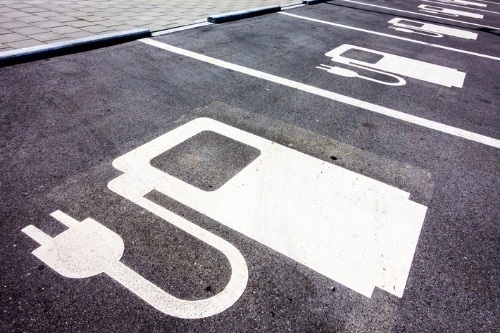Managing the risks associated with electric vehicles

Authored by John Driscoll, Senior Risk Manager, QBE
With the UK Government proposing to ban the sale of new petrol and diesel vehicles from 2030 and hybrid vehicles from 2035, the future of driving is electric.
The number of electric vehicles (EVs) on the roads is still quite low, accounting for just over 1% of the UK’s 35 million vehicles, according to the Society of Motor Manufacturers and Traders.
Numbers are increasing though. Sales of battery-powered vehicles more than doubled last year, and plug-in hybrid sales were up by more than a third. Energy regulator Ofgem is suggesting that 6.5 million households may have bought electric cars by 2030. To fuel this growth, EVs will become more affordable in the next few years as costs to produce batteries continue to fall.
Customers will also need to have greater confidence in vehicle battery life and in the UK’s charging infrastructure, to help combat ‘range anxiety’ - the fear of running out of battery power before reaching one’s destination. Ofgem, has recently announced that it is investing £300 million to help triple the number of ultra-rapid charging points around the UK, including 1,800 ultra-rapid charging sites at motorway service stations. According to Government figures, as of 1 April there were 22,790 public electric vehicle charging devices available in the UK, of which 4,259 were rapid chargers.
Risk considerations
As more drivers take to the roads in EVs, and the number of charging points grow, there are a number of risk considerations and insurance implications for businesses.
Property fire
There are various property risks to consider, not least of which is the risk of fire whilst vehicles are charging, particularly in confined locations such as underground or multi-storey car parks and garages. As EVs become more mainstream, we will no doubt see other business premises, such as hotels, gyms, leisure centres and care homes installing charging points to accommodate employees and customers. Charging infrastructure will also be needed for commercial vehicles such as distribution fleets and public transport facilities.
A fire can have a devastating effect on a business. To help businesses be prepared, RISCAuthority and the Fire Protection Association have published a very useful guide to fire safety when charging electric vehicles, which includes fire risk assessment, fire safety management and other safety considerations. You can download ‘RC59: Recommendations for fire safety when charging electric vehicles’ by putting this URL into your browser https://www.riscauthority.co.uk/public-resources/documents/resource/rc59-fire-safety-when-charging-electric-vehicles-401
Charger management
Chargers need to be installed by trained and accredited engineers in compliance with the IET Code of Practice: EV Charging Equipment Installation. They then need to be included on site maintenance schedules, including regular inspections, so any damage is quickly identified.
Charger location
When siting a charging point, the physical location needs to safe and secure to minimise risk from unauthorised use, vandalism, or theft. Just as thieves have found new ways to steal keyless cars, we’re seeing the theft of car charging cables increasing.
Fires involving lithium-ion batteries tend to be intensive and to present unique challenges to fire fighters as they can re-ignite after initial extinguishment. Consideration therefore needs to be given to the possibility of fire spread to the surroundings and provision of facilities for tackling a fire safely.
Cyber risks
The level of technology in vehicles and charging stations is advancing all the time and will continue to do so. As vehicles and chargers come to rely more and more on software, data connectivity and artificial intelligence it opens up more risk of vulnerability to software glitches, system failure or even malicious cyber-attacks to steal data, cause damage or hold drivers to ransom.
Vehicle repair
It is expected that repairs costs and repair times for EVs, compared to conventional vehicles, will be higher in the short to medium term whilst the industry adjusts. Also, due to the cost of batteries we could see a potential increase in total loss insurance claims.
When repairing vehicles with an electrified powertrain there are risks in that they contain and store energy in one form or another and could cause serious harm or death to technicians if not managed correctly. Repair guidelines will include:
- A triage procedure to identify the safety status of all electrified vehicles.
- Personal Protective Equipment checked and inspected before approaching the vehicle.
- The appropriate level of training and competence for technicians assigned to work on EVs, eg repairers accredited to the BS 10125 BSI Vehicle Damage Repair Kitemark scheme.
Post-repair, consideration will need to be given to:
- Necessary time, resource, and equipment to correctly charge the vehicle battery before returning to the customer.
- Safe disposal of hazardous components, such as traction battery packs.
Vulnerable road users
Because EVs are much quieter than other vehicles they can cause a risk to vulnerable road users, such as cyclists and visually impaired pedestrians.
In July 2019 the EU passed the ‘Regulation on the Sound Level of Motor Vehicles’, making it a legal requirement for new EVs to have a noise-emitting Acoustic Vehicle Alert System (AVAS) to make a sound similar to a traditional engine and alert road users of their presence when driving or reversing below 12mph. Pedestrians should be able to hear an EV over background noises. AVAS has been compulsory on all new types of electric and hybrid vehicles since 1 July 2019, and it will be required on all hybrid or electric vehicles sold from 1 July 2021 onwards.
Driver training
When talking about advancements in vehicle technology, we should not overlook the importance of driver training. Businesses and drivers will adopt EVs at varying speeds as they begin to understand the capabilities, limitations, and suitability.
Drivers will need to be familiar with how to conduct a walkaround check and spot any potential issues. Whereas a small accident in a conventional car might not be a big deal and ignored by some company car drivers, any incident that could lead to battery damage in an EV is a potential fire risk and should be reported and investigated.
Drivers will also benefit from knowing about:
- How to maximise efficiency (such as switching to eco mode).
- Monitoring their speed, as more energy is consumed at greater speeds.
- Instant acceleration (no manual gears), which could create risk for untrained drivers.
- Regenerative braking, meaning that the vehicle slows down when pressure is removed from the accelerator (unlike the coasting effect in a conventional vehicle). This can affect stopping distances.
- Reading the road ahead to avoid unnecessary acceleration and braking.
Effective driver training can help safer drivers to become more energy efficient, which will lead to reduced costs for their employers.
About QBE
QBE European Operations is part of QBE Insurance Group, one of the world’s leading international insurers and reinsurers and Standard & Poor’s A+ rated. Listed on the Australian Securities Exchange, QBE’s gross written premium for the year ended 31 December 2018 was US$13.7 billion.
As a business insurance specialist, QBE European Operations offers a range of insurance products from the standard suite of property, casualty and motor to the specialist financial lines, marine and energy. All are tailored to the individual needs of our small, medium and large client base.
We understand the crucial role that effective risk management plays in all organisations and work hard to understand our clients’ businesses so that we offer insurance solutions that meet their needs – from complex programmes to simpler e-trading solutions – and support them in minimising their risk exposures. Our expert risk management and rehabilitation practitioners focus on helping clients improve their risk management so that they may benefit from a reduction in claims frequency and costs.

